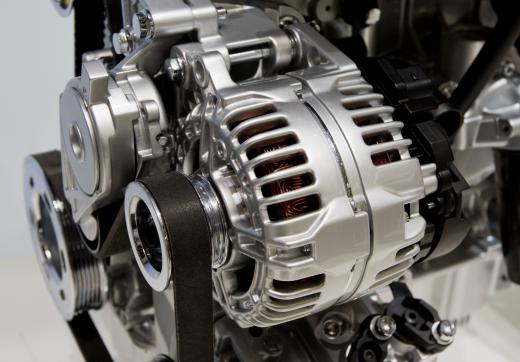A motor pulley is a type of wheel that is affixed to the engine of an automobile or other vehicle; this wheel is used to guide a timing belt or serpentine belt that helps power peripheral devices in the car such as the air conditioner unit. The type of motor pulley can vary according to its purpose; idler pulleys, for example, do not power any devices but instead help guide and tension the belts. Harmonic balancers counteract vibrations caused by combustion, which can damage the crankshaft.
The serpentine belt is a composite belt that runs through the various pulleys to power peripherals and to help engine timing. In the past, several belts were used instead of one, and one belt was dedicated to timing the engine properly. Serpentine belts in conjunction with a motor pulley system are now used for added strength and convenience, though the price of such belts does tend to be higher because of its length and specific shape. The pulleys are designed to work with the shape of the belt, which means the circumference of the pulley is grooved to accommodate the belt. This prevents the belt from slipping off the pulley or otherwise becoming damaged from misalignment.

An idler motor pulley is used to add the proper tension to the serpentine belt and to ensure the belt is guided properly through all pulleys. This idler motor pulley does not power any peripheral devices. It is adjustable in several directions to ensure the belt can be properly tensioned, and it is usually in a location that is fairly easy to access for quick and accurate belt tension adjustment. Serpentine belts often feature a flatter series of pulleys, since the belt is not grooved but is instead wider and flatter. The pulleys themselves are made of metal that can withstand the friction created from the belt as well as the high temperatures common in the engine compartment.

The motor pulley system is fairly efficient and reduces wasted space within the engine compartment, but the drawback to the system is its tendency to shut down all peripheral devices if the belt breaks. All of these devices are running off pulleys being turned by one serpentine belt, so if that belt breaks, all the pulleys stop turning, thereby depriving peripherals of power. In the past, several belts were used instead of just one, thereby avoiding this problem, but the advantages of the single belt system tend to outweigh the disadvantages.
